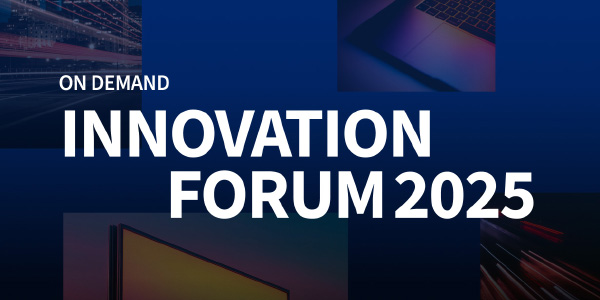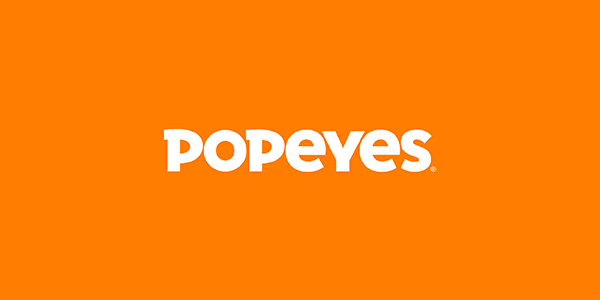AI Search Optimization: How to Win the Future of Advertising

TL;DR: AI Search and the Future of Advertising
- AI search optimization is critical as tools like Google AI Overviews and ChatGPT reduce clicks and change the discovery journey.
- LLMs act as new gatekeepers, rewarding citation-worthy content from platforms like Reddit, YouTube, and Wikipedia.
- Measurement models must evolve, replacing last-click with Marketing Mix Modelling (MMM) and incrementality testing to track influence without clicks.
- Paid opportunities are emerging in AI search optimization, but scale is small and ad formats are shifting to conversational flow.
- Marketers who experiment rapidly and align with AI search optimization best practices will win visibility and trust in the new era.
Only 8% of Google search sessions with an AI Overview result in any click to a website, compared to about 15% for searches without an AI Overview.
And since AI Overviews now appear on about 18% of all Google searches, this zero‑click phenomenon affects nearly one in five queries.
Even more alarming: users end their browsing session entirely 26% of the time after seeing an AI summary, compared to 16% when only traditional listings appear.
For a senior marketer juggling brand equity, lead pipelines, and ROI, these figures signal a seismic shift: AI‑powered search is rewriting the rules of discovery, and along with them, the playbook for online advertising budgets and performance metrics.
AI search is becoming the first stop for discovery, answering questions before users ever visit websites, social platforms, or videos. It disrupts the traditional funnel by fulfilling intent earlier and with less visibility.
In some cases, visibility drops, leads slow, and attribution gets harder to track. Budgets based on old click models may no longer deliver the same results. It’s time to review search spend and adjust strategies, rather than assume past approaches will keep working.thin air.
Still, it’s not too late to adapt. This article maps out the emerging AI search optimization stack for marketers: how to lean into formats AI cites, rethink measurement when clicks vanish, and re‑allocate ad spend toward platforms where visibility matters again.
LLMs: The New Gatekeepers of Content Discovery
Today, the search bar behaves more like a chatbot than a directory, with ChatGPT, Claude, Gemini, and even Google’s Search Generative Experience leading the shift.
Unlike traditional engines that display ranked links, these models generate concise, source‑cited summaries. The conversation ends in fewer clicks and often no clicks at all.
As Greg Boone, CEO of Walk West, observes, they’re not just surfacing content—they’re deciding what gets surfaced, which makes them the new editorial gatekeepers.
Michael Shang, SVP of Advertising Technologies at StackAdapt, says that “LLMs are not search engines—they’re task engines that handle the journey from inquiry to conversion—pre‑empting clickt-throughs entirely.”
The Vanishing Click: What’s Happening to Search Ads?
Search isn’t sending the same volume of traffic to websites. And when it does, ads aren’t cutting through like they used to.
CTR for Position #1 in Google (Informational Keywords)
Based on an analysis of 150,000 keywords
Source: Ahrefs
Senior marketers should see this as the beginning of what Boone calls a “lead flow crisis.” Search is no longer reliably funnelling traffic, and increasingly, paid search is being disrupted by language models that craft answers instead of steering clicks.
The upshot? Traditional SEO and SEM strategies, calibrated for clicks and driven by ranking, are losing their effectiveness. If visibility and ad impact vanish before prospects ever land on your site, what’s the point of pouring budget into ads no one sees or clicks?
Shang says the “pull” model (search ads) no longer delivers because LLMs answer queries natively, leaving fewer “click paths” for ads. Instead, “push” channels like programmatic, native, and CTV help compensate for the visibility loss in pull-based environments.
That insight aligns with broader industry momentum: Google is now embedding ads in AI Overviews and its new conversational “AI Mode,” and marketers are shifting ad dollars into placements where attention still lives, whether human or machine. Google itself predicts AI-driven search ad spend in the US will surge from just over $1 billion USD in 2025 to nearly $26 billion USD by 2029, as marketers chase visibility beyond vanished clicks.
Buyer Journey Complexity in the Age of AI Search Optimization
The challenge isn’t just fewer clicks. AI search optimization is unfolding in a landscape where buyer journeys have splintered into asynchronous, multi-platform touchpoints.
A single research path might begin with an AI Overview, jump to a YouTube clip, continue in a private Slack or Discord thread, then conclude with a purchase via a mobile app—none of which shows up as a neat, linear funnel in analytics.
Traditional attribution models fail here because much of this path is invisible to pixel-based tracking. Senior marketers must design strategies and KPIs that reflect a buyer journey that is not always visible, but can still be influenced at multiple high-intent moments.
Why AI Search Optimization Still Relies on Traditional Search Foundations
AI-powered tools like ChatGPT, Gemini, Perplexity and Google’s own AI Overviews are gaining traction. But rather than replacing traditional search, they exist alongside it, not at its expense.
A recent survey found 79.8% of users continue to rely on Google or Bing for general information searches, while AI is mainly used for complex or exploratory queries (and just 14% use it daily).
Despite growing use of AI Overviews, Google still commands roughly 92% of the global search market, making traditional search the default entry point for most users.
Moreover, trust in AI summaries remains low—only 9% of users say they fully trust AI Overviews, and a mere 1% click through to the actual source links.
For senior marketers, that means the rise of AI search isn’t a death knell for search ads, but a new layer atop an old foundation. The challenge becomes: how do you optimize for both AI experiences and traditional query behaviour as use cases diverge?
What Should Marketers Do About AI Search?
If the old playbooks aren’t changing, the path forward is controlled experimentation.
As Shang puts it, “no one has a crystal ball.” LLM algorithms are black boxes, so the only way to learn what works is to test, observe, and adapt.
Boone takes it further, urging marketers to stop clinging to rigid processes and start thinking like growth architects: prioritizing speed, adaptability, and measurable outcomes over perfection. In this new search landscape, agility is the only strategic advantage left.
Let’s look at three practical steps you can take.
1. Look for Alternative Places for Your Content
High-value content still matters, but where it’s published increasingly matters more.
Pew Research’s study shows that Wikipedia, YouTube, and Reddit collectively drive 15 % of all source citations in Google AI Overviews, proving LLMs heavily rely on trusted platforms—not your homepage or blog posts—to shape their answers. That’s why public relations is becoming more important than ever.
Marketers must transition from publishing web content to getting cited by AI, shifting investment from owned reach toward visibility in venues AI considers authoritative.
That paradigm underpins the rise of generative engine optimization (AEO/GEO): structural content strategies designed so LLMs actually name‑check your content in their response streams.
Boone recommends using the “Four P’s Framework” for modern visibility:
- Podcast. Drives personality-led growth. A personal voice matters more than ever.
- Partnerships. Fuels community-led growth. Build and borrow audiences through others’ trusted spaces.
- Paid Media. Still effective and trackable in an uncertain world.
- Public Relations. Not just for crises. Use it to be “cited” across the web and increase machine discoverability.
2. Rethink Attribution and Measurement
In the era of generative search, last-click and even multi‑touch attribution systems struggle—martech declares them increasingly unreliable, difficult to justify, and disconnected from real incremental lift.
Instead, marketers are adopting a layered measurement stack: Marketing mix modelling (MMM) for cross-channel visibility; incrementality testing using geo holdouts or holdback experiments to isolate true ad lift; and real-time platform-level reporting.
Senior marketing leaders should prepare for KPI architectures that go well beyond CTR. Future success will be measured by AI-native visibility metrics (think brand mentions in answer responses, AI citation counts, zero-click surface presence, embedding relevance, chunk‑retrieval frequency, and semantic density), not just impressions or link click volume.
This means growth measurement is shifting fast: workable attribution maps (what you know you can track) are giving way to causal estimation (what actually moved the needle).
3. Test Emerging Paid Opportunities
Among the early movers, Perplexity stands out for testing “sponsored follow‑up questions”—AI-generated prompts embedded beside answers (not brand-written copy) and priced on a CPM basis.
Despite major brands testing these ads, Perplexity uses only about 0.1% of its revenue from ads and serves just ~22 million active users, creating reach and ROI constraints.
Google, Microsoft’s Copilot, and other large platforms are integrating ads strategically into their AI search layers, such as AI Mode’s ads, AdSense inside chatbots, and sidebar placement next to AI Overviews.
Still, these nascent formats have far less media inventory or performance data than traditional channels. For now, they’re best thought of as pilot gateways, not budget-ready highways: great for testing voice, prompts, and structure, but too early for heavy lower-funnel dollars.
In short, paid opportunities in AI search are here, but they’re experimental, low-scale, and risky without proven ROI. The smart move isn’t to move dollars immediately, but to map conversational ad formats, experiment over controlled budgets, and test for what kind of prompt or placement earns user attention when no link exists.
A Strategic Playbook for AI Search Optimization
Contenders in the AI-first search landscape benefit from proactive, platform-diverse strategies. Here’s what senior marketers need to do today:
| What to Do | Why It Matters |
| 1. Diversify Channels Shift ad spend into programmatic, native, and CTV, where attention still lives. | As AI Overviews reduce click volume across search, programmatic and conversational ads are growing crucial. |
| 2. Prioritize Citation-Worthy Content Secure visibility on platforms LLMs love—Reddit, YouTube, Wikipedia—and aim to be “quoted” in AI answers. | Analyses show Wikipedia, Reddit, and YouTube receive 15–21% of citation volume in AI Overviews, despite representing a small fraction of overall web content. Brands increasingly need to generate content that’s citable, not just clickable. |
| 3. Rethink Measurement Metrics Move beyond CTR to MMM and incrementality testing. | Traditional last-click and platform-level attribution are unreliable when users vanish before clicking. MMM helps map value across channels statistically, while incrementality (via geo‑splits or holdbacks) measures true lift. These methods offer credible insights when clicks can’t be tracked directly. |
| 4. Test Early and Often Treat each AI engine, content format, and distribution channel as an experiment. | LLM algorithms are opaque and evolving. Low-cost, high-frequency testing enables brands to discover which query structures, voice styles, or placements generate AI citations. |
| 5. Align Content with AI Search Behaviour Create content tailored for AI understanding: full‑query Q&As, FAQ schema, data tables, lists. | LLMs favour structured, concise, factual content. AEO/GEO best practices involve targeting actual user queries, implementing schema markup, and structuring content so AI systems can directly synthesize it. That optimizes your chance of being included as an answer itself, especially in non‑click environments. |
For those leading marketing functions, the shift is clear: stop optimizing primarily for clicks and rankings, and start optimizing for citability, influence, and edge-case targeting.
The brands that adapt fastest to this fragmented, citation-driven ecosystem will be the ones still setting the bar five years from now.
Mastering AI Search Optimization
The headwinds felt in search are only part of the story. They’re symptoms of a deeper shift: an intelligence-first discovery layer where being trusted and being surfaced by generative AI matters more than ever.
For senior marketers, the implication is stark: search isn’t going dark; it’s moving inside AI systems.
Marketers who build voices that chatbots cite, test prompts at scale, and question every click signal stand to control the next decade of attention.
Thought leaders advise optimizing not just for search engines, but for LLMs, knowledge graphs, and direct answers. GEO, AEO, and AI‑friendly metadata must sit alongside zero‑click strategies by default.
The brands that thrive in this landscape won’t be the ones with the biggest search budget, but the ones learning fastest, iterating most aggressively, and adapting where AI tools look first.







